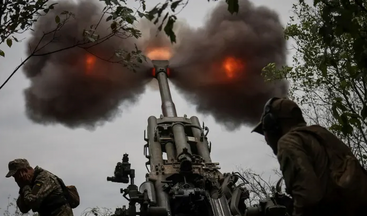Posted by BW Actual on Jul 22nd 2022
BLACKWATER USA | DAILY BRIEF
Ukraine
- Turkey says Ukraine and Russia are ready to sign a deal it brokered to release about 18 million tons of grain that Russia blockaded in Ukrainian ports. Neither Ukraine nor Russia confirmed they’d reached a deal.
- CIA Director Burns cited U.S. intelligence estimating that 15,000 Russian soldiers have died – and another 45,000 have been injured – fighting in Ukraine. Burns also noted that the CIA doesn’t believe recent rumors that Pres. Putin is ailing.
- Both the Pentagon and UK intelligence assess that Russian forces are losing steam in Ukraine: according to a Pentagon report, Russia has seized just 10 miles of territory in Ukraine in the last 90 days of fighting. UK intelligence also estimated that Russia’s ability to spy in Europe has been halved by arrests of deep cover spies and the expulsion of over 400 spies under diplomatic cover.
- Ukraine is gearing up for a major counteroffensive and lobbying for more weapons like the game-changing long range HIMARS that have enabled it to target Russian command centers and ammunitions depots. A WSJ article pasted below has more.
Afghanistan
- A veteran war correspondent went public with her account of Taliban intimidation, saying the Taliban threatened to arrest her if she didn’t retract unfavorable articles. It’s no surprise that the Taliban bullies and censors journalists; this is just another example of it.
Iran
- Belgium ratified a contentious prisoner-exchange treaty with Iran that will allow a swap for Belgian aid worker Olivier Vandecasteele, who Iran quietly arrested on espionage charges in February. Critics of the treaty worry that exchanges will encourage Iran to take more Belgian hostages.
Sahel
- Mali’s army repelled an early morning attack on the country’s main military base in Kati, where interim president and coup leader Col. Goita lives. It’s the closest insurgents have struck to Bamako, which is about 10 miles (15 km) from Kati.
Libya
- Rival factions affiliated with Libya’s Presidency Council clashed in Tripoli overnight, leaving at least three dead. Militias mobilized around the capital but have since settled into a tense calm.
Other News
- The European Central Bank raised interest rates by half a percent, which is double the increase the market expected – although European stocks didn’t react much, suggesting investors were comfortable with the rate hike.
- U.S. authorities charged a former employee of cryptocurrency exchange Coinbase and two others with insider trading of cryptocurrencies for allegedly earning over $1.5 million from illegal trades. It’s the first insider trading case involving crypto assets.
- Canada and the U.S. filed a joint dispute settlement against Mexico, charging that Pres. AMLO’s policies unfairly stifle the ability of U.S. energy companies to operate in Mexico. The U.S. is seeking a tariff payment of $10 to $30 billion to make up for its companies’ losses.
Ukraine Faces Shortfall in Weapons as It Gears Up for First Major Counteroffensive (WSJ)
Western weapons have helped Ukraine claw back territory in the south, but Kyiv will need greater range and numbers of arms to succeed. ‘We’ve lost so many tanks.’
Along the sprawling fields of sunflowers, wheat and watermelon in southern Ukraine, fighters are preparing for their first major offensive to recapture territory seized by Russian forces earlier this year.
This month, Ukrainian President Volodymyr Zelensky ordered a new offensive along the southern front to reclaim regions near or along the Black Sea coast that are critical to the country’s security and economy.
The order followed the delivery of M142 High Mobility Artillery Rocket Systems, or Himars, by the U.S. last month. Those arms, which strike targets from longer distances and are easy to move and very powerful, have already allowed Ukrainian forces to claw back some territory, say soldiers along the front line.
But the Russians’ ability to strike at the south from land, air and sea means Ukrainian forces need a far greater number and range of weapons from the West, including drones, artillery, tanks and armored vehicles, if Kyiv hopes to regain an area that is indispensable to any future settlement of the war, say Ukrainian commanders and soldiers fighting there.
“For two months, we didn’t move from our trenches, trying our best not to allow Russians to advance while living without showers or shelter in open terrain,” said Aleksandr Patrachenko, a machine-gunner fighting in the Kherson region. “The Himars have made a difference. But we’ve lost so many tanks.”
Since early March, Russia has been able to capture virtually uninterrupted territory—dubbed a land bridge—stretching from the eastern Donetsk region, including the port city of Mariupol, through the Zaporizhzhia, Kherson and Mykolaiv regions.
While the strategic southwestern port city of Odessa has remained under Ukrainian control, preventing Russia from dominating the entire coastline, the region around the city still endures frequent shelling from Russian long-range missiles, as do major urban centers such as Mykolaiv. Russia had already annexed the Crimean Peninsula in the south in 2014.
By pushing Russian forces back in the regions of Kherson and Mykolaiv, where some of the fiercest fighting is currently under way, Ukrainian forces hope they will be able to loosen Russia’s grip on the south.
Even with the support of the Western weapons, the advances have been hard fought. In the village of Potiomkine late last month, Russian forces fired some 800 rounds on Ukrainian battalions, which found little cover in the open fields from heavy Russian bombardment, according to one of the commanders. Ukrainian forces managed to liberate the village with the help of the Himars, but many soldiers were killed in battle and vital weapons destroyed.
“It was hell over here,” said Serhiy Shatalov, 29, the commander of the offensive. “Now, it’s like paradise. Super quiet. Everything changed when we got the Himars.”
This week, the Pentagon said that Ukrainian forces killed a Russian commander in the Kherson region after using one of their new Himars to strike a Russian command center. Russian authorities also confirmed Tuesday that the Antonivsky Bridge in the region of Kherson was damaged with Himars. The bridge is a key supply line for Russian forces in the Kherson and Mykolaiv regions and the city of Kryvyi Rih.
A footbridge in the Dnipropetrovsk region replaces a crossing destroyed by Ukrainian forces in March to prevent Russian advances.
As part of the new offensive ordered by Mr. Zelensky, Ukrainian military officials said that operations were under way to liberate the towns of Nova Kakhovka and Arkhanhel’s’ke. If those missions are successful, Ukrainian forces will use their new long-range systems to start taking aim at Russian military targets in Crimea as early as this fall, a senior Ukrainian military official said.
Himars have been “a game changer,” said Ukraine’s Minister of Defense Oleksii Reznikov in an interview.
But now, with only about a dozen Himars allocated to Ukraine, the need for longer-range weapons is growing as the war shifts primarily to an artillery battle. Some soldiers on the front line worry that between the lag time it takes to get the systems out to their remote positions, and the time they need to receive a crash course on their operations, it could be a while before the Himars yield more tangible results.
Residents of the Mykolaiv region continue to endure Russian shelling as Ukraine clings to the western portion of its Black Sea coast.
“If you want to be successful here you need a lot of tanks and a lot of armored vehicles, because we’re exposed,” said Cmdr. Shatalov, who has trained with U.S. Marines in Quantico, Va. “The enemy also digs very good trenches so they can detect our positions [with drones] before we see them.”
In early March, Ukrainian forces destroyed their own bridges over the Inhulets River to help them stall the rapid Russian advance in Kherson and Mykolaiv. They were able to recapture a number of villages at the time. But since then, many of those villages have continued to suffer incessant rocket barrages by the Russians, making it virtually impossible for Ukrainian forces to seize on their successes.
Last month, in the nearby towns of Davydiv Brid and Velyka Oleksandrivka, Russian forces stopped the Ukrainian advance when they destroyed bridges.
Himars have “been very successful in Kherson—we feel it clearly,” said Pyotr Bilodid, 32, a soldier at a checkpoint near the front line in Mykolaiv, where jasmine wildflowers line rows of destroyed homes and few signs of life are evident. “But we need more to break the land bridge.”
Many said that Russian forces have effectively used a combination of reconnaissance and kamikaze drones to spy on Ukrainian positions then hit them, often killing fighters and disabling their tanks. Mr. Reznikov said that while allies have provided drones to help in the fight, they haven’t offered any anti-jamming software to prevent them from becoming disabled, something at which the Russians have proven themselves adept.
Despite promises by various North Atlantic Treaty Organization leaders to phase out Soviet-era weapons in favor of more modern NATO-grade weapons, many fighters on the southern front lines said that they still use predominantly Soviet weapons, including what they all described as “trophy weapons” seized on the battlefield from retreating Russians.
Fighters in the area say that Russian forces are spread increasingly thin as Ukrainian firepower grows in intensity and range.
While Moscow in recent days has vowed to launch a new offensive, Russian forces have increasingly struggled to maintain offensive combat power, forcing them into a dilemma over whether to deploy reserves to the eastern Donbas region or defend against Ukrainian attacks in Kherson, according to U.S. and British intelligence officials.
On a recent day near the front line in Mykolaiv, a group of Ukrainian fighters smoked cigarettes at the base of a massive 2S19 Msta, a Soviet 152.4 mm self-propelled howitzer that they seized earlier this month.
None of the fighters in that unit had ever handled Western-made weapons and worried that the intensity of the battle would leave no time to train on new systems. The staggered deliveries of Western weapons and the time needed to train Ukrainian soldiers on their use has slowed the offense.
An artillery commander among the group, however, expressed confidence as he slapped the side of the Msta. “If we can handle this Russian s—, using modern American weapons will be like riding a bike,” he said.

